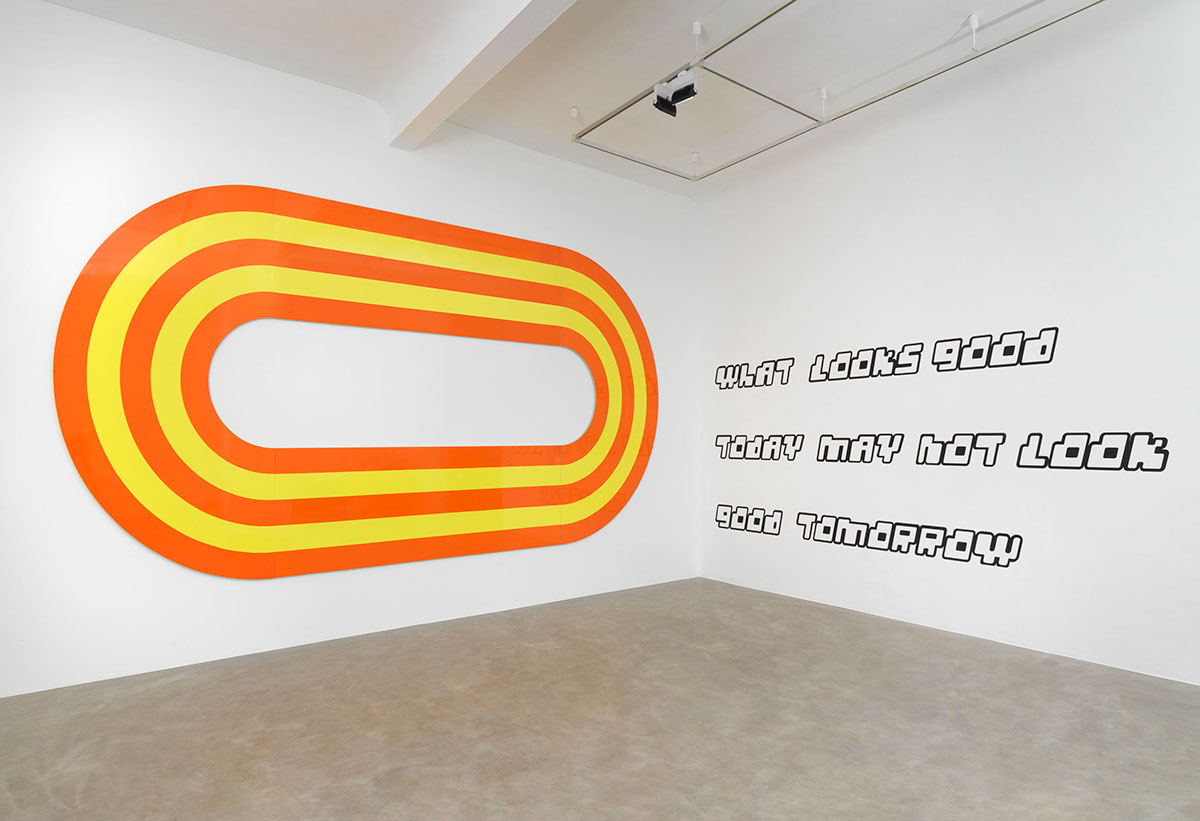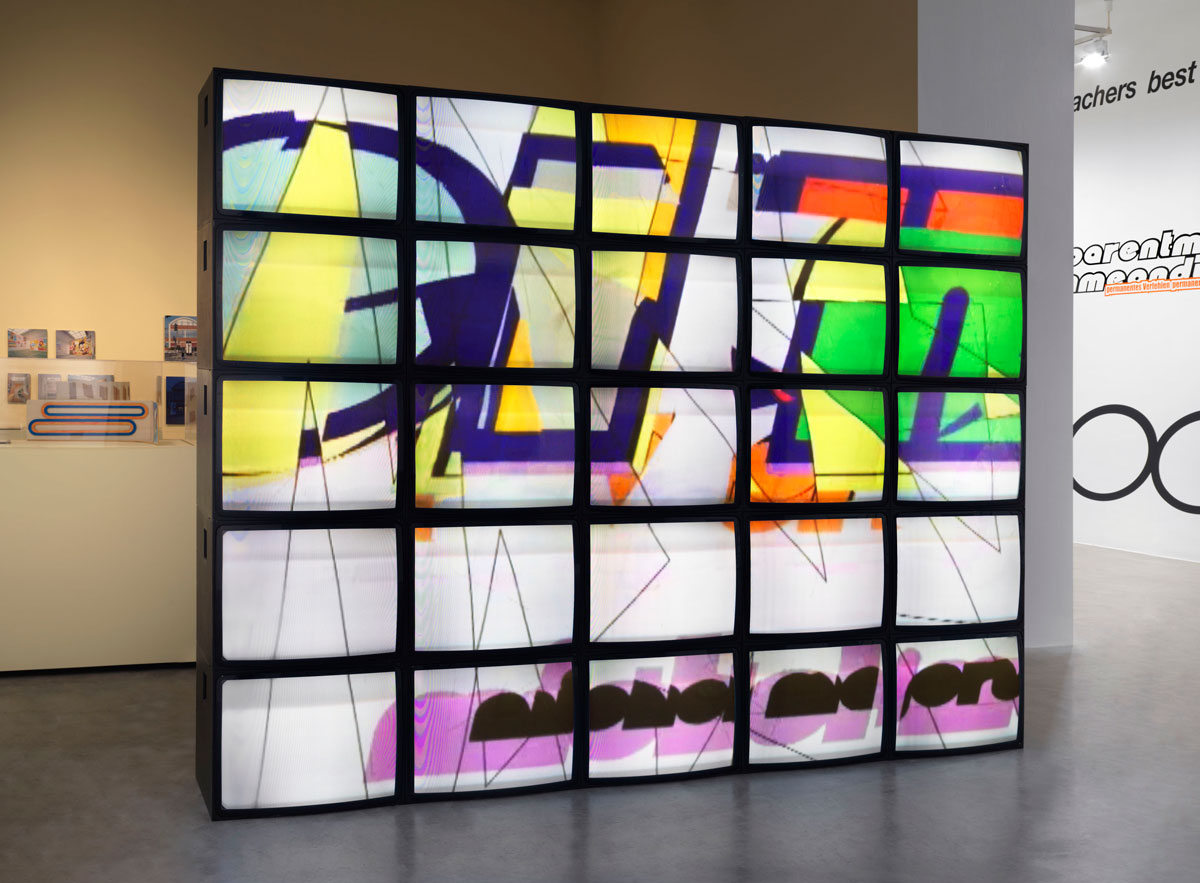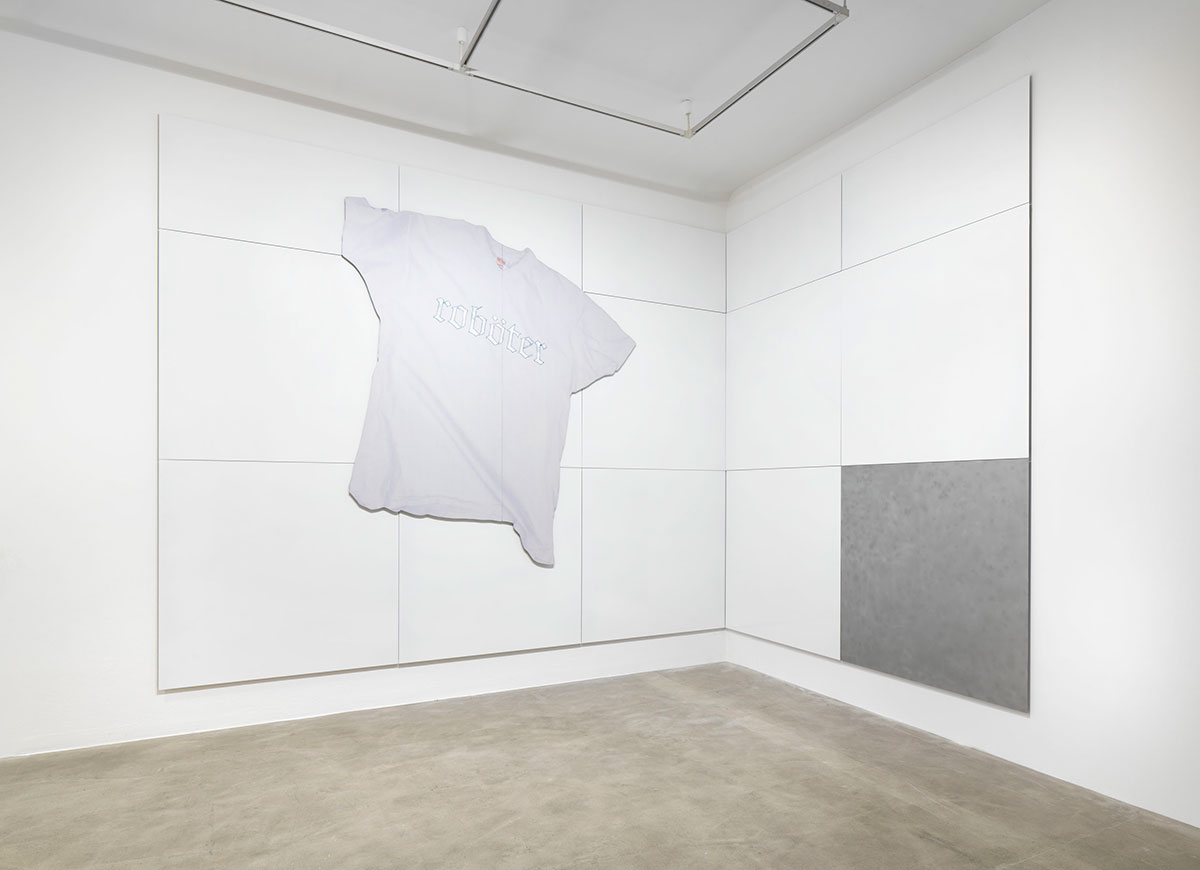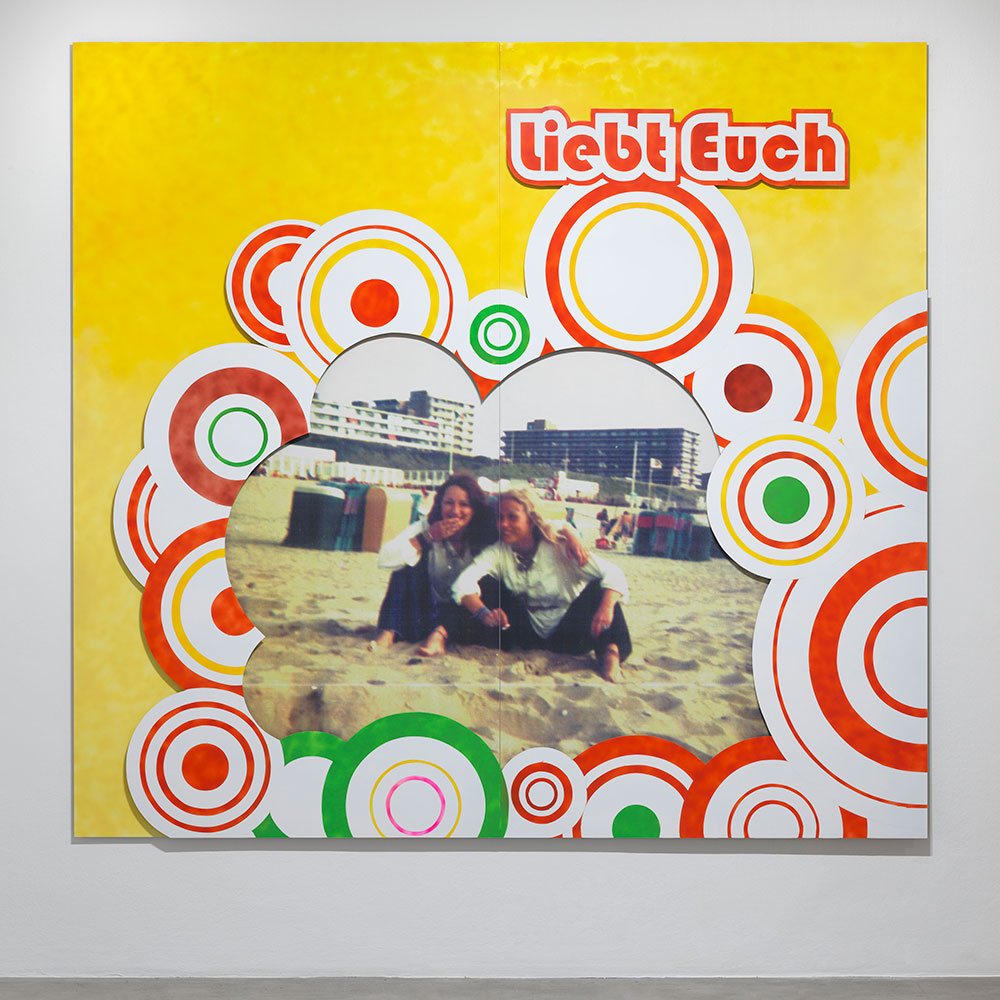ART CITIES: Berlin-Michel Majerus
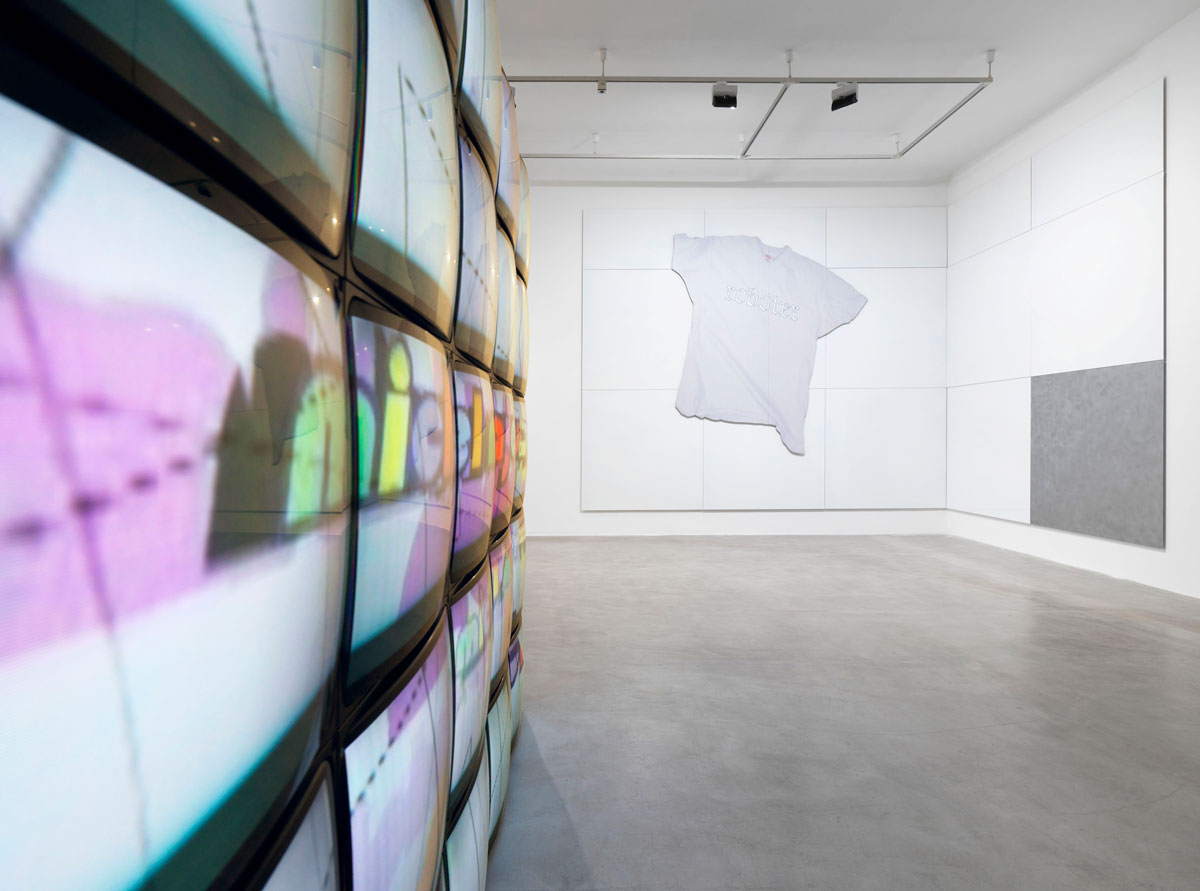 The Germany-wide exhibition series “Michel Majerus 2022” is dedicated to various phases and aspects of the artist’s extraordinary oeuvre, which has continued to influence generations of artists to follow. In five solo exhibitions Michel Majerus’ oeuvre is honored in all its complexity on an unprecedented scale. Loans from the artist’s estate, as well as from public and private collections, offer new insights into Michel Majerus’ early work as well as the medial and topical questions posed throughout his body of work.
The Germany-wide exhibition series “Michel Majerus 2022” is dedicated to various phases and aspects of the artist’s extraordinary oeuvre, which has continued to influence generations of artists to follow. In five solo exhibitions Michel Majerus’ oeuvre is honored in all its complexity on an unprecedented scale. Loans from the artist’s estate, as well as from public and private collections, offer new insights into Michel Majerus’ early work as well as the medial and topical questions posed throughout his body of work.
By Efi Michalarou
Photo: n.b.k. Archive
The work of Michel Majerus negotiates social paradigms that unfolded in the 1990s and continue to influence us today: the start of the virtual age with the increas-ing presence of computers and the Internet, the spread of mass media, the world of advertising, and pop and youth culture. After studying at the Staatliche Akademie der Bildenden Künste in Stuttgart, Majerus moved to Berlin in 1992, where he embarked on an international career during the economic boom following German reunification. His large-scale paintings, expansive wall works, and monumental installations embody an artistic reflection on the digital turn and the overflow of imagery that characterizes social networks today. His works express the acceleration of information and consumption cycles and the limitless availability of images accompanying them. Majerus used these influences in a way that implies an engagement not only with general cultural developments but also with the parameters of artistic practice and reception. His work reveals a non-hierarchical and discursive under-standing of the image, in which quotations, seriality, and temporality play a central role, blurring the boundaries between the art world and everyday life. Spatial interventions are an essential element in the work of Michel Majerus. Alluding to art movements such as Pop Art and Minimal Art, his ensembles enable viewers to become part of an experimental, experiential arrangement. The exhibition at Neuer Berliner Kunstverein highlights Majerus’s installations as a central means of expression in his practice, conveying his reflections on mass media and his method of creating spaces for nuanced aesthetic experiences. With his practice of sampling existing im-ages, Majerus challenged both the inflation of artistic expression in art history and traditional notions of what constitutes the value of an image. Through exaggeration, stylistic shifts, fragmentation, and targeted juxtapositions, he repeatedly questions the relationship of the images to reality – shattering their frame of reference or inserting them directly into the context of public and semi-public space. His urge to push the possibilities of presenting his works, of which he created about 1,500 in a short period of time, was only halted by his untimely death: in 2002, Michel Majerus was killed in a plane crash at the young age of 35.
The large-scale video installation “michel Majerus” (2000), brings together many of Michel Majerus’s artistic approaches. In the technically elaborate sculpture, the name “michel majerus” flickers across a wall of 25 monitors. The words are repeatedly broken up, crisscrossed by diagonal lines, fragmented, and reassembled. They are set in a bright, cursive bubble-like font typical of the advertising world of the late 1990s and the graffiti scene. Majerus designed the typography himself and had it animated by Till Vanish using the color palette of his works. Vanish, an artist and graphic designer based at Kunsthaus Tacheles in Berlin, had been experimenting with video since 1990 and developed video graphics for the Love Parade. In works such as this one, Majerus reflects on the media overload emerging at the time and the increasing commercialization of all areas of life. The visual language of logos, with their bright colors and shapes, permeate his paintings, and much of his imagery includes strikingly designed words or lettering – a clear reference to Majerus’s Pop Art precursors, who also drew on images from everyday culture and the world of consumption, mass media, and advertising. One aspect characteristic of his artistic approach is how he constantly remixes visual motifs. In addition, many of his visual elements seem incomplete or in the process of disintegration – a nod to the speed, constant change, and production of “trash” accompanying the desire for new and exciting images. Majerus later reproduced individual still images from the video work in the medium of painting. The pictures are about 3 × 3 meters in size and are titled with the artist’s initials and a serial number: mm1, mm2, mm3 (all 2001). This titling approach can be understood as a deliberate allusion to his status as an artist and personal branding. Then as now, this process was based not only on the artistic production itself but also on the representation of the artist’s own person. Nowadays, this practice is sometimes taken to the extreme on social media platforms, where new videos are constantly produced and uploaded – acts of self-promotion that Majerus playfully anticipated. “I’m sure that 100 years ago it wasn’t a problem”, produced in 1997, is both a painting and an object-like wall installation. Following the tradition of the shaped canvas, the form of the art work corresponds to the depicted object, which in this case is painted on aluminum. On display is an element that can be characterized as a “loop” – the quint-essential symbol for speed, the passage of time, and repetition. Visually, it is reminiscent of a Carrera slot car racetrack. For his contribution to the Manifesta 2 catalogue, Majerus provided a collage of words and images that included a photograph he made of such a racetrack, including two toy cars flying along it, in front of the model of the work “dieser einzelfall an konstruktion …” (1997) Gaming was a fascinating aspect of contemporary culture for Majerus. Gaming on home computers and Nintendo consoles had become a prominent aspect of leisure culture, and a favorite pastime for Majerus himself. In this context, the abstract loop can be understood as a reference to losing oneself in a game, but also as a renewed rejection of any kind of pictorial invention – as an image without a narrative. Moreover, “looping” is emblematic of the process of constantly revisiting and multiplying a figure or tonal sequences common in techno music, with which Majerus had a particular affinity. The installation “generelle faszination” (1999) is an example of Michel Majerus’s work with so-called shaped canvases, which were particularly widespread in the New York art scene of the 1960s and served as a post-minimalist means of expanding the concept of painting. Frank Stella championed this new format, and his works strongly influenced Majerus. The idea of transcending the “classical” rectangular frame to allow the motif and dynamics of the painting to determine its canvas format is just as recognizable in Majerus’s work as in Stella’s sculptural approaches that allow his paintings to protrude into the space. Unlike Frank Stella, however, Majerus did not primarily use shaped canvases to lend additional expression to his paintings. Instead, he used them as a means of transforming everyday objects into icons and elevating their status to become works of art. To do so, he often transferred greatly enlarged and sometimes edited photographs onto aluminum plates using digital or silkscreen printing. Not only the motifs but also the dimensions of his works and the resulting viewer’s perspective lend them an aesthetic reminiscent of billboards. The work “generelle faszination” features a T-shirt with the word roböter printed across the front. This is “framed” by 15 rectangular wall panels that diminish in size toward the top, their edges forming a grid-like pattern. This is vaguely reminiscent of the white-and-gray- patterned background used in Photoshop. Introduced around 1990, the software program enabled users to extensively manipulate digital images, and was used by Majerus in the production of his work. In front of this surface, a shaped aluminum element seems to float.
Photo: Michel Majerus, generelle faszination, 1999, Exhibition view Neuer Berliner Kunstverein (n.b.k.), 2022, © Michel Majerus Estate, 2022. Courtesy neugerriemschneider, Berlin; Matthew Marks Gallery. Private Collection. Photo: n.b.k. / Jens Ziehe
Info: Curator: Michaela Richter, Neuer Berliner Kunstverein (n.b.k.), Chausseestrasse 128 / 129, Berlin, Germany, Duration: 17/12/2022-5/2/2023, Days & Hours: Tue-wed & Fri-Sun 12:00-18:00, Thu 12:00-20:00, www.nbk.org/
